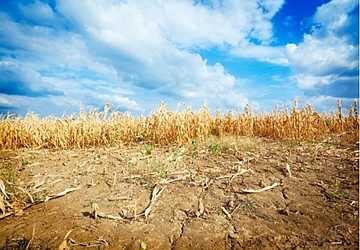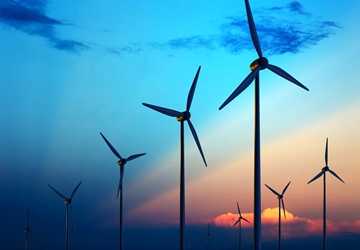Many businesses worldwide are "greening" their supply chains by investing in environmentally friendly technologies and practices to lessen the impact of climate change. This move could involve either a direct investment in green energy or a reallocation of resources toward so-called "greenfield" projects.
With co2 levels rising aggressively for decades, NOAA says climate change will persist, creating a vicious cycle and feedback loop. And because of this, there is a significant danger to investments, although there is a fresh opportunity for investments in a more environmentally friendly world.
Investment Threats from Global Warming
As a result of climate change, there are threats to existing investments in a wide variety of sectors and degrees.

Agriculture
Warmer temperatures aren't the only effect of climate change; more intense weather and drier seasons are on the way, too. Crop yields can be reduced or eliminated when normal farming practices are disrupted by extreme weather.
Homeownership
As the oceans rise, residents of low-lying areas will have to decide whether to take preventative measures or simply accept the inevitable flooding.
Banks
Climate change affects banks significantly since they invest in coastal real estate that increasing sea levels may threaten. As a result, they may stop funding homes in high-risk flood zones as sea levels rise.
Insurance companies
Insurance firms are also vulnerable to the effects of more severe weather. Thus, extreme weather may cause an increase in insurance costs or even render a property uninsurable.
Utilities
Consumers increasingly depend on energy providers to meet their increasing demand for electricity to run air conditioners and other devices in response to rising average temperatures. Despite the obvious upside of new investment opportunities, this shift has the potential to put a strain on the power infrastructure.
Consumer companies
For example, branded food manufacturers and distributors require a constant supply of fresh produce. Yet, due to agricultural disturbances, they may have less consistent access to these items or pay more for them at the very least.
Tech firms
Power outages pose a serious risk to the operation of many technology facilities, including data centers, because they demand enormous energy.
Since so many global sectors are intertwined, a shift in the weather in one region can significantly impact the availability of inputs in another. Therefore, climate change can significantly alter existing trading patterns and harm the world economy.
The Latest in Climate Change-Related Investing
There is widespread investment in various energy technologies by nations and businesses to reduce emissions of greenhouse gases.
Solar
While growth has only begun, photovoltaic panels have quickly become a common choice for residential and industrial power generation due to the sun's abundant supply and the technology's ever-increasing efficiency.

Wind
Wind power is rapidly expanding and competitively priced compared to other energy options.
Carbon capture
Carbon capture is the practice of sequestering greenhouse gases like carbon dioxide for later usage. For example, the Center for Climate and Energy Solutions estimates that 90% of carbon dioxide emissions from fossil fuel power plants and manufacturing can be sequestered for beneficial reuse.
Geothermal
While geothermal energy is plentiful since the Earth naturally generates it, it is only marginally utilized. In 2020, for instance, 31% of Iceland's electricity came from geothermal power.
Hydropower
Hydropower uses the energy contained in water flows to create electricity. This can be done on a grand scale, as with enormous dams, or on a more modest one, with smaller hydroelectric plants.
Renewable resources and energy efficiency.
Biofuels
Ethanol and bio-diesel are the two most common types of biofuels, both of which are produced by directly converting biomass into liquid fuels. Waste, algae, and cellulose are just some materials researched and developed as potential new biofuel sources.


